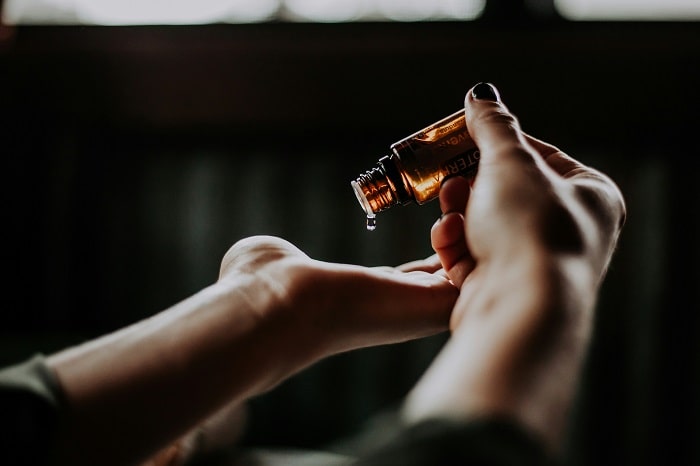With growing awareness around sustainability, many are seeking eco-friendly alternatives in their daily beauty routines. If you’re wondering how to make your beauty routine more sustainable, switching to reusable beauty products can help you minimize packaging waste, save money, and contribute to a healthier planet. In this guide, you’ll find practical tips and product recommendations for a sustainable beauty routine that prioritizes minimal waste and maximum impact.
1. Why Choose Reusable Products to Make Your Beauty Routine More Sustainable?
Beauty products are often packaged in plastic, and the beauty industry generates millions of tons of waste each year. Opting for reusable products is an impactful way to reduce waste while learning how to make your beauty routine more sustainable, all while enjoying the benefits of a robust skincare and beauty routine.
- Environmental Benefits: Reusable products reduce the need for single-use plastics, helping to minimize landfill waste and lower carbon emissions.
- Cost Savings: While reusable items may have a higher initial cost, they save you money over time by replacing disposable items.
- Healthier Ingredients: Many sustainable beauty brands also focus on non-toxic, cruelty-free, and organic ingredients, which are better for your skin and the environment.
2. How to Make Your Beauty Routine More Sustainable with Reusable Cotton Rounds
Cotton rounds are a staple in skincare routines, but their single-use nature generates significant waste. Here’s how to make a sustainable switch:
- Reusable Cotton Pads: Made from organic cotton or bamboo, these pads are washable and perfect for removing makeup, applying toner, or cleansing. They are gentle on the skin and can last for years.
- Silicone Pads for Cleansing: For deeper cleansing, silicone pads are durable and reusable. They provide gentle exfoliation and are easy to sanitize.
3. Opt for Refillable Makeup Containers
Refillable containers are a sustainable option for makeup essentials, allowing you to keep using the same packaging and simply replace the product when it runs out.
- Refillable Compacts: Some brands offer refillable compacts for items like blush, eyeshadow, and foundation. Look for brands that provide eco-friendly refills to minimize waste.
- Lipstick Refills: Sustainable brands offer lipstick in refillable cases, allowing you to keep the original packaging and switch out only the color cartridge.
- DIY Options: You can repurpose small glass jars for homemade cosmetics like lip balms or creams, reducing the need to buy new containers.
4. Make Your Beauty Routine More Sustainable with Bamboo Brushes and Combs
Traditional brushes and combs are often made from plastic, which can end up in landfills or oceans. These are gentle on your hair and scalp, and bamboo is naturally anti-bacterial.
- Bamboo Makeup Brushes: Bamboo makeup brushes are made from a renewable resource and can last as long as synthetic options. Many brands also offer biodegradable handles.
- Bamboo Hair Brushes and Combs: These are gentle on your hair and scalp, and bamboo is naturally anti-bacterial. Look for brushes with natural rubber bases for extra eco-friendliness.
5. Switch to Reusable Razor Systems
Disposable razors are a significant source of plastic waste, with billions discarded every year. Here’s how to make a more sustainable choice:
- Safety Razors: A high-quality safety razor has a metal handle and uses replaceable metal blades, making it completely recyclable. With proper care, a safety razor can last a lifetime.
- Reusable Razor Cartridges: Some eco-friendly brands offer razors with reusable handles and recyclable cartridges, cutting down on single-use plastic.
6. Choose Solid Bars over Bottled Products
Solid beauty bars, like shampoo, conditioner, and soap bars, reduce the need for plastic packaging and tend to last longer than liquid versions.
- Shampoo and Conditioner Bars: These bars come in minimal or zero packaging and provide the same benefits as bottled products. They’re ideal for travel and have a lower environmental impact.
- Solid Moisturizer Bars: Moisturizer bars are compact, packaging-free, and are a great option for hydration without plastic waste.
7. Consider DIY Products in Reusable Containers
Making your own beauty products can be an enjoyable, cost-effective, and eco-friendly way to care for your skin and hair.
- DIY Recipes: Try creating natural face masks, scrubs, or hair treatments using ingredients like honey, oatmeal, and essential oils. This reduces the need for multiple packaged products.
- Glass or Metal Jars: Store your homemade products in reusable glass or metal containers for added sustainability. These containers are also ideal for travel and can be washed and reused indefinitely.
8. Buy in Bulk When Possible
Buying beauty products in bulk reduces packaging waste and can also save you money in the long run.
- Bulk Refills: Some stores offer bulk refills for skincare and body care items like lotions, soaps, and serums. Bring your own containers to minimize waste.
- Concentrated Formulas: Concentrated formulas for products like shampoo or body wash allow you to dilute them at home, reducing the need for excess packaging.
Sustainable Beauty Brands to Consider
Supporting eco-conscious brands makes a big difference. Here are some popular brands that offer eco-friendly and reusable beauty products:
- Ethique: Known for their solid shampoo and conditioner bars with zero plastic packaging.
- Plaine Products: Offers refillable, aluminum-packaged shampoos, conditioners, and body washes.
- LastObject: A reusable alternative to single-use cotton swabs and makeup wipes.
Final Thoughts
Sustainable beauty is about making small changes that add up to a big impact. By incorporating reusable and refillable products into your beauty routine, you’ll discover how to make your beauty routine more sustainable while still enjoying a complete, effective regimen. Not only does this approach help the planet, but it can also lead to cost savings and a more mindful relationship with the products you use every day.

